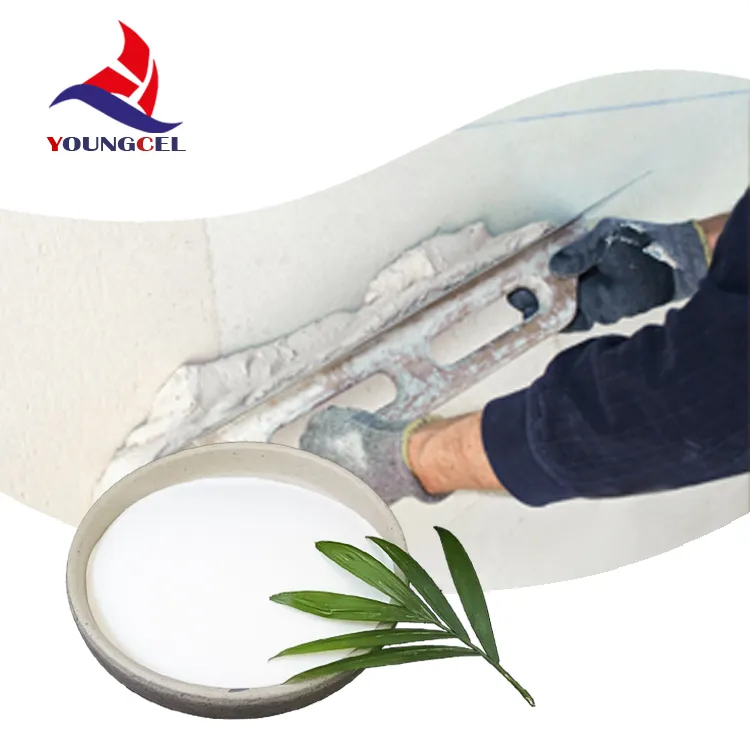Jul . 10, 2024 20:28
Back to list
Use of HPMC in Industrial Applications Benefits, Properties, and Common Uses
Hydroxypropyl methylcellulose (HPMC) is a versatile polymer that has found numerous applications in the industrial sector. It is commonly used as a thickening agent, stabilizer, and film former in various industrial processes. In this article, we will explore the different uses of HPMC in industrial applications and its benefits.
One of the main advantages of HPMC is its ability to modify the rheological properties of a wide range of industrial products. By varying the concentration of HPMC, manufacturers can control the viscosity and flow behavior of their products, making them easier to handle and process. This is particularly useful in industries such as construction, where HPMC is used in cement-based products to improve workability and prevent sagging.
In the pharmaceutical industry, HPMC is often used as a binder in tablet formulations. It helps to ensure that the active ingredient is evenly distributed throughout the tablet and that the tablet maintains its shape and integrity during handling and storage. HPMC is also used as a sustained-release agent in some drug formulations, allowing for a controlled release of the active ingredient over an extended period of time.
HPMC is also widely used in the food industry as a thickening agent and emulsifier. It can be found in a variety of products such as sauces, dressings, and ice creams, where it helps to improve texture and stability

hpmc for industrial. HPMC is considered safe for consumption and is approved for use in food products by regulatory agencies around the world. In the cosmetics industry, HPMC is commonly used in hair care products such as shampoos and conditioners. It helps to improve the viscosity of the product and provides a conditioning effect on the hair, making it easier to comb and style. HPMC is also used in skincare products such as creams and lotions, where it acts as a thickener and emulsifier, helping to create a smooth and creamy texture. Another important application of HPMC is in the manufacturing of paints and coatings. It is used as a thickening agent and stabilizer in water-based paints, allowing for better coverage and adhesion to the surface. HPMC also helps to prevent sagging and dripping of the paint, resulting in a more uniform finish. Overall, HPMC is a versatile polymer that offers a wide range of benefits in industrial applications. Its ability to modify rheological properties, improve stability and texture, and act as a binder and emulsifier makes it an invaluable ingredient in various industries. With its proven track record of safety and effectiveness, HPMC is likely to continue playing a key role in industrial processes for years to come.

hpmc for industrial. HPMC is considered safe for consumption and is approved for use in food products by regulatory agencies around the world. In the cosmetics industry, HPMC is commonly used in hair care products such as shampoos and conditioners. It helps to improve the viscosity of the product and provides a conditioning effect on the hair, making it easier to comb and style. HPMC is also used in skincare products such as creams and lotions, where it acts as a thickener and emulsifier, helping to create a smooth and creamy texture. Another important application of HPMC is in the manufacturing of paints and coatings. It is used as a thickening agent and stabilizer in water-based paints, allowing for better coverage and adhesion to the surface. HPMC also helps to prevent sagging and dripping of the paint, resulting in a more uniform finish. Overall, HPMC is a versatile polymer that offers a wide range of benefits in industrial applications. Its ability to modify rheological properties, improve stability and texture, and act as a binder and emulsifier makes it an invaluable ingredient in various industries. With its proven track record of safety and effectiveness, HPMC is likely to continue playing a key role in industrial processes for years to come.
Latest news
-
Premium Detergent Grade HPMC Hydroxypropyl Methylcellulose: Superior Thickening & StabilityNewsAug.31,2025
-
HEC 100000 Hydroxyethylcellulose for Paint | Superior ThickeningNewsAug.30,2025
-
Wall Putty Rdp Powder Packaging DesignNewsAug.29,2025
-
Introduction to Hpmc Hydroxypropyl Methyl CellulosNewsAug.29,2025
-
Hpmc Industri Grade IntegrationNewsAug.29,2025
-
How to Choose the Right Construction AdhesiveNewsAug.29,2025




